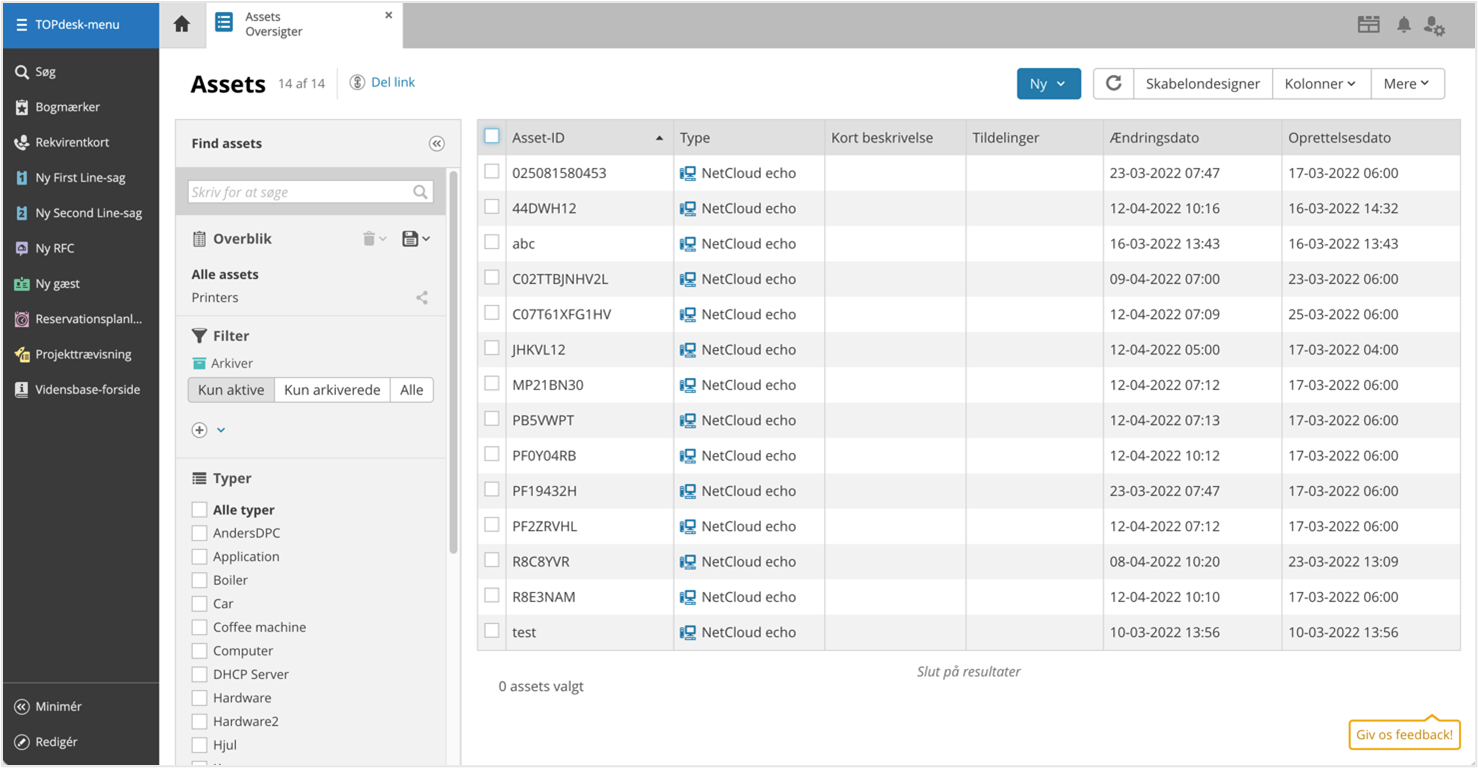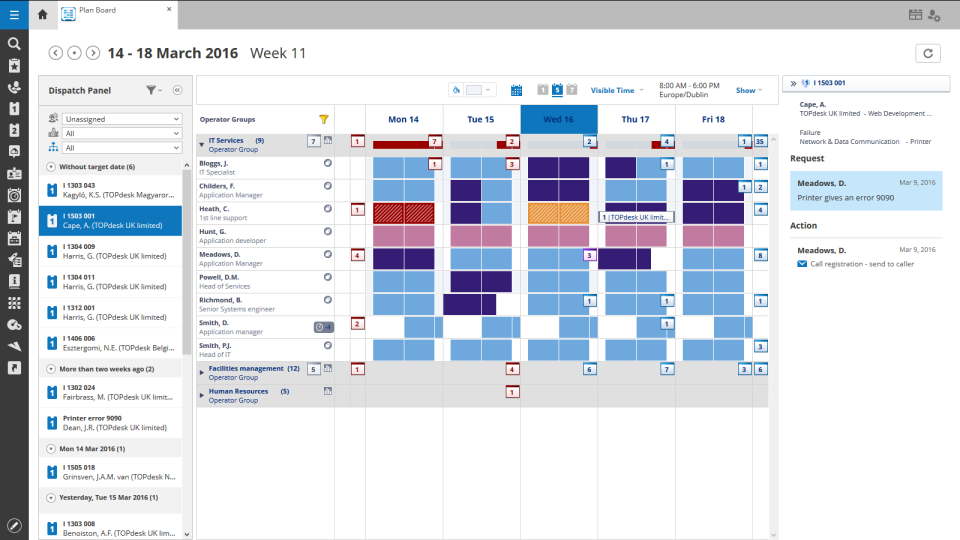Topdesk Issues: Troubleshooting & Solutions For Common Errors
Why does the digital world sometimes feel like a locked room with no key? When searching for answers online, the frustrating "We did not find results for:" message often stares back, a stark reminder of information lost in the vastness of the internet. It's a common experience, a digital echo of a search gone wrong, leaving us feeling adrift in a sea of information, desperately seeking a lifeline of accurate, relevant content.
The modern web, while a treasure trove of knowledge, can also be a frustrating labyrinth. The struggle to find the precise information you need can be a significant hurdle. "Check spelling or type a new query," the gentle suggestion that follows the failure, is often a hollow comfort. It highlights the gap between our needs and the digital world's capacity to meet them. This often means having to rephrase our search terms, or casting a wider net in hopes of finding something of use. The problem is compounded by the fact that we often dont know what were looking for specifically; were in search of a general idea, which means it can be harder to find exactly what we need.
The digital age demands a seamless flow of information. It is a dynamic environment where efficient communication and accessible resources are not simply desirable; they are essential. Yet, despite the sophisticated technology, the 'We did not find results for:' message, and the subsequent suggestions to double-check spelling or rephrase search queries, serve as recurring reminders of the persistent imperfections that mark our digital experiences. These frustrations highlight the underlying complexities of information retrieval. While search engines are continually evolving and learning, the challenge to capture the nuances of human queries in every scenario remains. The need for clarity, accurate search parameters, and a robust understanding of the digital landscape is crucial for all of us.
Often, the frustration extends beyond the simple lack of results. The web is also packed with information that is simply wrong, or out of date. We have to be careful about where we are getting our information from. There is a lot of misinformation online, and it's easy to get caught out. So it's not just about finding information, it's about finding accurate and verified information. The digital age is not only an age of information, but of information overload.
The absence of immediate answers prompts a deeper reflection. The very act of searching reveals the evolving demands of our digital ecosystem. The quest for knowledge, in this context, is not merely a technical challenge, it is also a human one. It underlines how important it is for us to develop effective search strategies. There is also an aspect of digital literacy at play, which influences our capacity to navigate the complexities of online environments effectively. The frustration of unfulfilled search attempts should serve as an invitation for us to embrace continuous learning and enhance our ability to navigate the ever-changing information landscape that surrounds us.
While the initial search might fail, there are often alternative solutions. The advice to 'Check spelling or type a new query' is a starting point. It implies that the error is often minor, such as a typo or a grammatical mistake. But it also suggests that our initial assumptions may be wrong. This underscores the importance of being adaptable, flexible, and willing to revise our search parameters, experimenting with different terms and exploring alternative search paths. This continuous effort to refine the search query, and the willingness to persist in seeking answers, is key in navigating the digital world. Ultimately, the pursuit of information is a journey, not a destination.
The user experience also plays a crucial role in determining the ease with which we get information. A confusing website or an unwieldy search engine can be as frustrating as a failed search. The design and structure of these digital platforms should therefore be user-centered, so that the user can readily locate the content that they are looking for. Well-designed interfaces, combined with robust search functionalities, will help provide satisfying experiences. Digital developers and designers have to work with the users, who are ultimately their customers, to find ways that ensure easy navigation.
The modern digital experience places demands on the user and the content creator. The digital landscape must be one that constantly evolves in response to the requirements of its audience. Digital tools are constantly developing; we must adapt to this dynamic environment, and embrace the innovative tools and platforms that will emerge over the years.
Let's move our attention to the practical side. The provided content includes fragmented messages, such as "Bezoek direct topdesk | help center," which, when translated, suggests visiting a help center directly, or exploring specific service centers that will help you with customer service questions, or access to helpful tools. The phrase points toward a possible platform, or support system, that facilitates access to assistance, support, or solutions to issues. This hints at a customer service setup, designed to assist users with their inquiries. This type of service can be a valuable resource for resolving questions.
Additionally, "Blijf net als 200.000 andere vakantieliefhebbers op de hoogte van onze nieuwste parken en de beste aanbiedingen!" translates to "Stay informed, like 200,000 other holiday enthusiasts, about our newest parks and the best offers!" This implies a platform, service, or company providing information about vacation parks, promotions, and deals. Its an invitation to join a community. The phrase highlights how important it is to be engaged with the latest trends, and how vital it is to make use of special offers. This suggests a business model centered on direct promotion. The offer of updates and information indicates a commitment to keeping the customer informed and promoting a sense of belonging.
The message "Suitable for any department as needs differ from one department to another, you can piece together your ideal topdesk solution." describes the versatile nature of a given service, which can be personalized to meet the needs of diverse departments. It highlights the capacity of the service to be customized, ensuring that it is useful across various areas of an organization. This feature makes it suitable for diverse situations.
Furthermore, "We would like to show you a description here but the site wont allow us." implies a deliberate exclusion, perhaps due to technical restrictions, privacy policies, or a lack of permissions. The statement underlines the challenges faced in the digital world when it comes to displaying, sharing, or making accessible certain types of information. In some cases, it emphasizes the control that digital platforms and their owners have over what information is shared. It suggests that not all information is immediately available and that there are barriers to information access.
The message "Login to my topdesk with your account to access your subscription." is a clear call to action, urging users to sign in to a service to obtain access to subscribed content or other account-related functionalities. It signifies the need for secure credentials and suggests a membership platform. This is standard practice and a common method of controlling access to premium content.
The phrase "If you forgot your password, reset it using the link below," is also a practical guideline that offers instructions on how to recover an account, thereby ensuring user access and account security. It is a necessary part of any digital platform and a standard measure in customer relations. This kind of feature helps to maintain account security and prevents the loss of access. The option to recover your password should be straightforward and secure.
The statement "Omvat features zoals incident management, asset management en problem management," which translates to "Includes features such as incident management, asset management, and problem management," describes core functional areas of a specific software or service, such as Topdesk. This highlights its capacity to handle numerous business processes. This indicates that the software provides many tools for various activities, such as resolving issues, maintaining IT infrastructure, and overall operational effectiveness.
So, what does this all mean in practice? The fragmented messages provided offer several points of insight into digital service and customer experience. There is a need for better customer service. It underlines the need to create interfaces that are easy to use, and the requirement to provide information in a clear and accessible manner. We must always think about how we can enhance the user experience and create a positive digital environment for the user. And the core of all this should be the user's needs. This involves addressing search failures, providing efficient search queries, and creating comprehensive digital products.
In the future, the key to success is going to be adaptability. We have to be prepared to update our practices and approaches as the digital world develops. Continuous learning, innovative thinking, and a customer-first approach are the building blocks of our digital futures. Let's create a digital world where finding information is a seamless process, not a hurdle.


